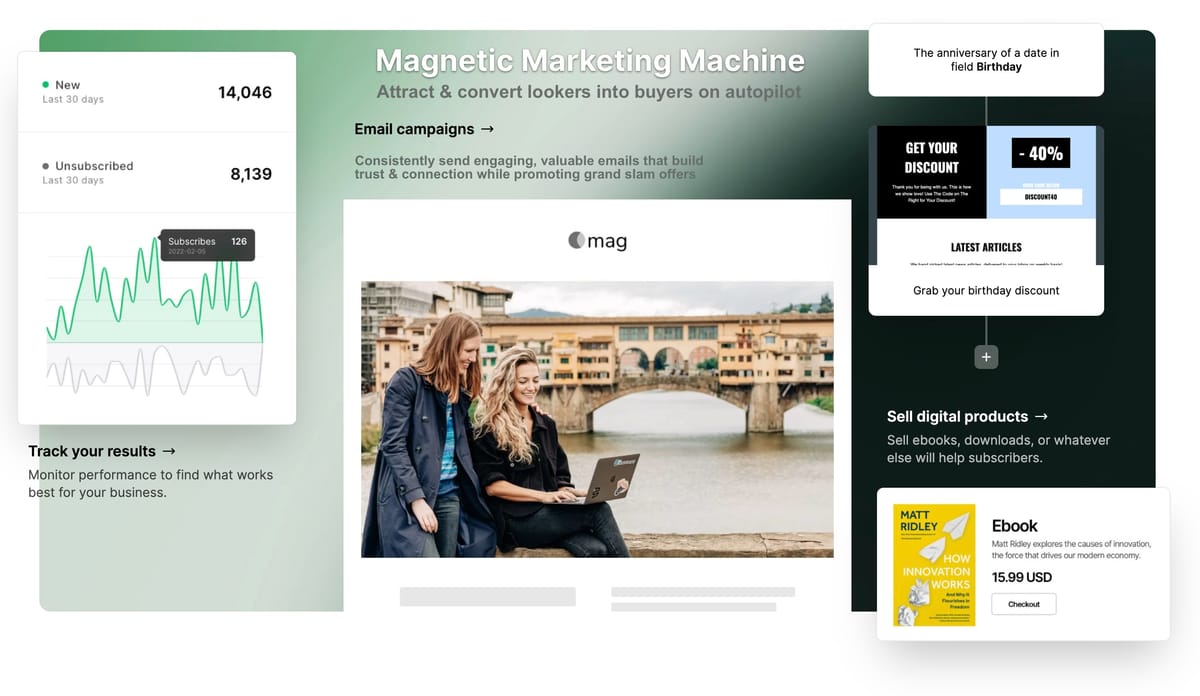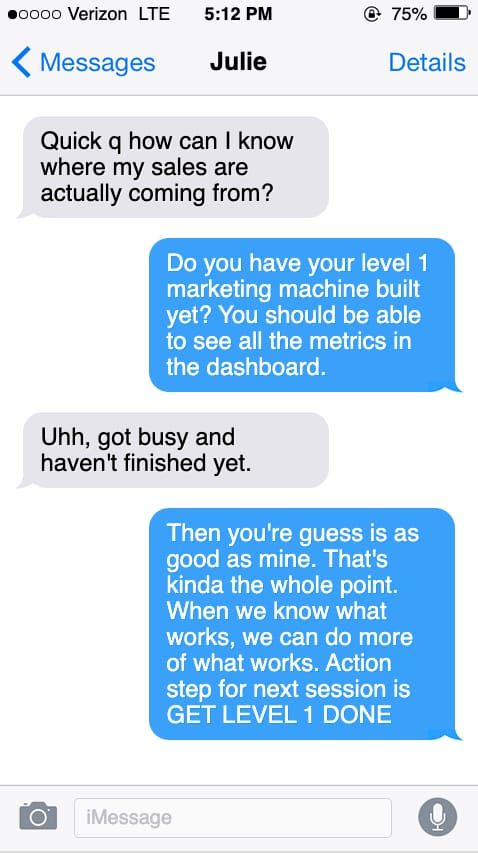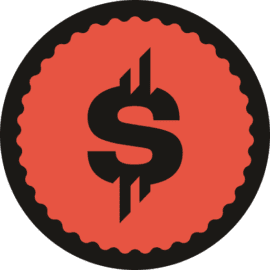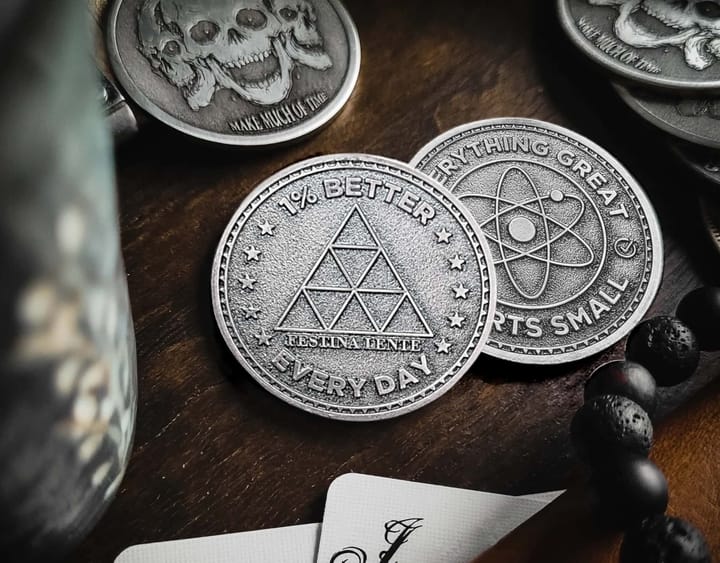Growth marketing cheat sheet: fix the top 6 profit-killing problems in under 6 minutes

A question I get asked a lot is "do you want fries with that?" 😆. Another one is "why isn't my marketing working"?
I push a bit more. "Working meaning ...?"
"Like actual sales. I do all the things but it just falls flat. Honestly I don't know where the sales I do get are coming from."

This goes against all the tenets of the Magnetic Marketing Manifesto, which the #1 rule is DO MORE OF WHAT WORKS.
How can you do more of what works if you don't know what works? Some smart (and probably dead) guy said "what gets measured gets improved."
/// FYI if you need help with any of this stuff reply back to any of my emails, email me or book a coaching call. ///
Ok now on to the top 6 problems that in my 13+ years of entrepreneur experience are the most common profit killers.
(But don't take it from me. Listen to a real marketing legend Omar at 100mba.net explain it himself).

Problem #1. Marketing isn't sales (you need both)
Marketing without sales is like peanut butter without chocolate (why bother?)
For over 50% of you, this is why your marketing isn't getting you buyers. It's by far the most common "leaky hole in the marketing bucket" thing I fix.
Warning: here comes my "magnetic marketing manifesto" – united against pretty marketing that doesn't pay for itself plus way more.
THE PROBLEM:
MARKETING IS NOT SALES (they are two different things & my superpower is combining both, which is kind of rare. Most marketers focus on pretty, not performance – and we both know only one of them stacks cash).
Marketing attracts attention, sales converts lookers (called leads) into paying buyers.
If you think customers just automatically start buying, you're missing 97% of your market (only 3% are "hot" or ready to buy right now) & you're wasting marketing budget that isn't paying you back.
People need to know – why you? why now? That's sales.
Then keep selling aka reminding them you exist. Studies show that it takes 7 times of hearing about you to even know you exist, much less buy something.
For example, you could have an amazing paid ad campaign that brings 1000s of visitors to your website. But if you don't have a way to follow up with them, poof they're gone (and so is your $).
- There's no way to capture leads (lead magnet that gathers email addresses, phone numbers, etc.)
- Even if you have the leads, there's no system to follow up automatically like a welcome email sequence that sells them on it or invites them to take the next step, get a demo and make an offer, no place to sign up for a phone call, schedule an appointment or consultation, etc.
You've got to have a sales process in your business.
Marketing gets you the leads, sales makes the sales.
AND THE FORTUNE IS IN THE FOLLOW UP.
THE FIX:
Create a magnetic marketing machine that nurtures leads into sales on autopilot. The easier you make it for someone to buy, the more you ask with the right words at the right time, the better your offer (or "bait" aka lead magnets) = the more you sell. That's the game I love winning for your business.
A magnetic marketing machine that sells on autopilot will:
- Turn leads into buyers automatically with email
- Attract leads with the right words at the right time
- Amplify your relationship by sending valuable weekly emails
- Sell with grand slam offers so good they'd be stupid to say no
- Collect reviews at the buyer's moment of peak satisfaction
- All of this runs on autopilot so you stay focused on what you do best

Now for #2 (it's a classic).
Problem #2. Targeting the wrong audience
Great marketing is about reaching the right audience, the ones who are most likely to take action aka convert into customers aka buy. I call these dream buyers.
If your marketing isn't tailored to your dream buyers YOU ARE WASTING TIME AND MONEY.
A lot of people think they have a marketing problem, when they really have a conversion problem - they aren't targeting the right leads. Example: you're selling high-end business software to college students – that's going to fail because they don't need what you're selling. Less extreme and more common is targeting too wide and trying to sell your thing to everyone - only a micro percent really want what you've got. Tighten up the focus - the riches are in the niches, as they say.
Two scenarios to prove the point:
- Let's say you spend $1k on an ad campaign. From that you get 100 leads and 10 sales. Each sale is worth $100. So you broke even, spent $1k and made $1k. (Could have just stayed in bed, no?)
- The next campaign you target dream buyers. This time you only get 70 leads, but from those 70 you double your sales because your product is a perfect fit for them = 20 sales. Now you made $2k and doubled your investment. (Now any time you can 2x your money that's a day worth getting up for, imho).
How, you may ask, can I identify who my dream buyers are so I can stack cash faster? Here's the checklist:
Problem #3. Confused buyers don't buy
Your marketing message needs to be clear and compelling. Pick only ONE benefit as your "unique selling proposition" and focus on that. If the potential customer doesn't understand why your offer is valuable TO THEM, they won't take the next step. You've got to be super clear on who it helps, how it helps, why they should care, why they should act now, what action you want them to take next, etc. Again, a tighter focus on the dream buyer makes all this easier.
Problem #4. Failing to follow up
Generating leads through advertising is only the first step. You need a system to follow up with these leads and nurture them through the sales process. Studies show only 3% of leads are "hot" buyers that are ready to buy now. That means 97% need days, weeks, months or even years to buy from you. So what do you do with them until then?
Emailing them regularly with your email newsletter is a simple start. Even better is to follow up with them through email automation sequences in your email software.
A very common mistake I've found is that people are collecting leads and then do nothing with them! Set up email flows (aka sequences) that provide value ongoing. Some people call these shadow newsletters. As soon as somebody joins your email list, they should be getting regular valuable emails, one after the other, generally at least every other week (depends on your niche), with great resources & content until they're ready to buy.
And of course, throughout the weeks and months, you're going to make special offers to them. This whole process is called "nurturing" - you're building a connection with your audience, they get to know like and trust you, then eventually some will buy. The customer journey goes from cold (they don't know you), to warm (they know you but aren't ready to buy yet) to hot (they're ready to buy).
Nurturing your leads is how you generate sales from the 97% who aren't ready to buy right now.
Problem #5. Poor customer experience
Your marketing may be excellent but if your customer experience is lacking, you're going to have a hard time converting leads into customers. This includes the whole customer journey from the quality of your website to the customer service they receive asking a question on your chatbot or email, etc. Remember - every interaction with a customer is marketing, even when they are already customers. They need to be delighted from the first click, the first ad, the first time they land on your website. When you can get them to say "wow this company really cares about making me feel special", you're winning.
This is why you can never invest too much in your website:
- User-friendly, easy to use
- Easy to read with clean, compelling words (aka copywriting)
- It's not overwhelming
- One clear call to action (CTA) that encourages them take action - download, subscribe, buy, respond, etc.
Reason #6. Not measuring and optimizing
If you're not measuring and adjusting the results of your marketing, you're missing out on a lot of improvements and sales. The more you are targeting the right customers with the most effective messaging and offers on the most effective media channels, the more you will convert into buyers.
You need to continuously look over your campaigns, sales pages, A/B tests, etc. and analyze how you can optimize them. Technically this is called Conversion Rate Optimization (CRO). If you don't have a team (like us at legendmedia.co) doing this for you, then you need to be doing it yourself.
If you're like most, you're doing spray-and-pray marketing. You launch an email or an ad campaign and just move on. Without looking at the results and thinking "how could we improve for next time", how could you improve? You're just winging it and hoping, and as they say, hope is not a strategy.
Look at each campaign and ask "what did this do for me?"
- How many visitors
- How many leads
- How many leads clicked (Click Through Rate)
- How many converted into buyers (Conversion Rate)
- Where did my sales come from (with tracking for Attribution to a specific marketing channel - ads, social posts, etc.)
It's important to track test results so you can do more of what works - see what's working, what needs to get cut, improved, tweaked, optimized. This allows you to spend time and money in the right places and get the most results for your marketing budget.
If you want help maximizing your marketing budget, get in touch at legendmedia.co.
– Daniel




